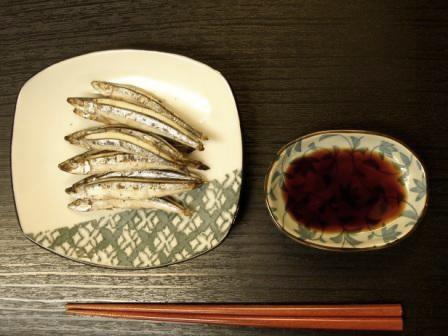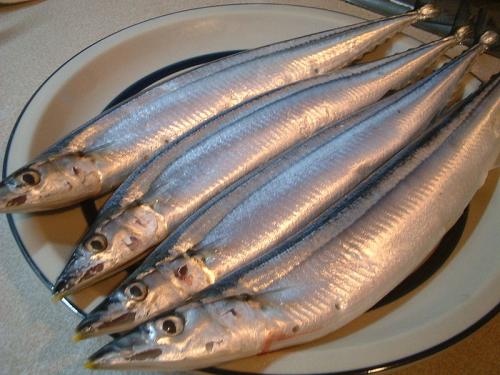Kinwashi Tour Japan Thread
-
so did you know...Mutsugoro: mudskipper.
should be from which perfecture?
So ..Saga, now you know, so where is Saga?
Still in Kyushu.
Hokkaido
Marimo: moss balls [found only in Lake Akan, Hokkaido]
Aomori
Ringo-musume: apple-market promotion girl
Iwate
Wanko-soba: small bowls of soba noodles
Miyagi
Gyu-tan: grilled beef tongue
Akita
Kiritanpo: Chewy mashed rice on a skewer
Yamagata
Sakuranbo: cherry
Fukushima
Kitakata-ramen: Kitakata-style ramen
Tokyo
Tocho: Tokyo Metropolitan Government Office building
Kanagawa
Kintaro: “Golden Boy,” a popular figure in Japanese folklore
Saitama
Satsuma-imo: Sweet potato
Chiba
Rakkasei: peanuts
Ibaraki
Shika: deer
Tochigi
Gyoza: Chinese dumpling
Gunma
Shimonita-negi: Shimonita leeks
Yamanashi
Tsububudo: grapes
Niigata
Sasa-dango: steamed rice dumpling wrapped in bamboo leaves
Nagano
Kisokoma: Kiso horse
Toyama
Churippu: tulip
Ishikawa
Ama-ebi: northern pink prawn
Fukui
Echizen-kani: Echizen crab
Aichi
Shachihoko: fabulous dolphin-like fish (castle roof tile ending)
Gifu
Sarubobo: “monkey baby,” lucky charm doll
Shizuoka
Mikan: mandarin orange
Mie
Ise-ebi: Ise shrimp
Osaka
Takoyaki: octopus balls
Hyogo
Tamanegi: onion
Kyoto
Maiko: geisha in training
Shiga
Shigaraki-yaki: Shigaraki ware
Nara
Shika: deer
Wakayama
Kujira: whale
Tottori
Rakkyo: shallot
Shimane
Iwami-ginzan: Iwami silver mine (registered World Heritage site)
Okayama
Masukatto: muscat grapes
Hiroshima
Momiji: maple leaves
Yamaguchi
Fugu: blowfish
Tokushima
Uzushio: whirlpools
Kagawa
Shodoshima-oribu: Shodoshima olive
Ehime
Botchan: protagonist of a well-known novel by Natsume Soseki
Kochi
Tosa-inu: Tosa dog
Fukuoka
Hakata-ningyo, Hakata doll
Saga
Mutsugoro: mudskipper
Nagasaki
Doragon: dragon
Kumamoto
Suika: watermelon
Oita
Mejiro: white-eye (songbird)
Miyazaki
Mango: mango
Kagoshima
Saigo-don: historical hero Saigo Takamori (1827-77); “-don,” followed by a name in Kagoshima, has the nuances of both respect and affection
Okinawa
Goya: bitter gourd -
If you never go there,
how you know there got this kind food.
-
If you never go there,
how you know there got this kind food.
む�����蒲焼
-
so this much more helpful info.
む�����蒲焼
http://gurutabi.gnavi.co.jp/gourmet/item/1397/restaurant_ranking/

-

�州・�賀県�グルメ�特産�を��寄� �ット通販/ショッピング
 �買�物数 0 個
�買�物数 0 個  �計金� ¥0円
�計金� ¥0円








商��: む����蒲焼�甘露煮
ä¾¡æ ¼ï¼šï¿¥1,680 (税込)ã�“ã�®å•†å“�ã�¯ã€�é€�料別ã�§ã�Šå±Šã�‘ã�—ã�¾ã�™ï¼ˆäººæ°—é †ä½�: 26 ä½�)商å“�紹介
�入�������。大変�待��致����。
有明海��れ�む����を蒲焼�������り�時間を���甘露煮�����。滋味豊��味���自慢��。
ã��ã‚‹ã��ã‚‹ã�¨ã�—ã�Ÿç›®çŽ‰ã‚’å‹•ã�‹ã�—ã€�ヨテヨテæ©ã��姿ã�Œæ„›ã��ã‚‹ã�—ã�„ã‚€ã�¤ã�”ã‚�ã�†ã�¯ã€�日本ã�§ã�¯æœ‰æ˜Žæµ·ã�¨å…«ä»£æµ·ã�®ä¸€éƒ¨ã�«ã� ã�‘ã�—ã�‹ç”Ÿæ�¯ã�—ã�¦ã�„ã�ªã�„ç��ã�—ã�„éšã�§ã�™ã€‚
雄ã�¨é›Œã�Œå¿…ã�šå�Œã�˜ç©´ã�«ä½�ã‚“ã�§ã�Šã‚Šã€�「仲むã�¤ã�¾ã�˜ã�„éšã€�ã�¨ã�•ã‚Œã€�ã�“ã‚Œã�Œã€Œã‚€ã�¤ã�”ã‚�ã�†ã€�ã�¨å‘¼ã�°ã‚Œã‚‹ç”±ç¸�ã�«ã�ªã�£ã�Ÿã�¨ä¼�ã�ˆã‚‰ã‚Œã�¦ã�„ã�¾ã�™ã€‚ ã�“ã�®å•†å“�ã‚’å�‹é�”ã�«æ•™ã�ˆã‚‹
��商�を���教�る -
source.

Copyright (C) 2008 KYUSHUUOICHI Co., Ltd All Rights Reserved..kyushuuoichi.jp/fish_mutugoro.html
-
Next we will go for this also from Kyushu.
stayed tune if you love KYUSHU.
-
Kinwashi,
love Kyushu.
That why, just only fish,
already shown here this is the third coming
Come to Japan...lah,
please save your money. throw here.
see more fishes here,
what biggest tank this and that.
Come KYUSHU, no regret.
-
 �eat a fish bone, head, tail, internal organs and all】
�eat a fish bone, head, tail, internal organs and all】
The Silver-stripe round herring is a small fish. It size about 10cm. The fish is called the Kibinago in Japan. They belong to the herring family. They come to Japan with a warm current. Because they are too small to keep long, they are not sold out of the landing place still lately, but we can eat them even at the another place depend on the improvement of freezing technique.
The best advantage of Kibinago is to eat all. Thier bone, head, tail, internal organs and all are able to eaten. The Kibinago is a good side dish for modern who are short of calcium.
There are some kinds of how to eat the Kibinago. The sashimi is most delicious. They are cooked to push the internal organs out by the thumb. The sauce is generally the miso and vinegar sauce in Kagoshima. The Kibinago are so small that it must be cooked a lot. Even housewives cook mode than 2 hours full of a big bowl, her family eat within 30 minutes. So this move them to tears.
Then the sashimi is too hard to eat out of the place for the catching Kibinago. It needs fresh. We recommand the groceries and the fried fish to out of Kagoshima people. Specially the dried Kibionago are good. The dried Kibinago keep the natural shape without the wrinkles as a shishamo smelt. We roast them lightly. The seed Kibinago is so specially tasty that we feel drop our cheeks down. -
http://kagoshima-kibinago.co.jp/


ã��ã�³ã�ªã�”ã�®äº‹ã�ªã‚‰ã€Œã��ã�³ã�ªã�”専門店ã€�ã�®å½“社ã�«ã�Šä»»ã�›ã��ã� ã�•ã�„。

焼ã��ç«‹ã�¦ã‚¢ãƒ„アツをã�Šå�¬ã�—上ã�Œã‚Šã��ã� ã�•ã�„ï¼�
����一夜干��
ã‚‚ã�†ä¸€æ�¯ã�Œé£²ã�¿ã�Ÿã��ã�ªã‚‹éšã�§ã�™!
絶妙ã�ªå¡©åŠ 減ã�«ã‚ˆã‚Šé…’ã�Œæ¬²ã�—ã��ã�ªã‚‹å‘³ã�«
仕上����り��。
����専用�秘��醤油ダレ�漬�込�,
骨ã�£ã�½ã�•,苦ã�¿ã€�è‡ã�¿ã�¯å…¨ã��ã�‚ã‚Šã�¾ã�›ã‚“ï¼�
�����対�るイメージを変�������
アツアツ�ジューシー�旨��際立��
フライパン����5分�焼���り�
甘塩���������も食�られ���
酒類を�供�れ��る飲食店様�居酒屋店様�
喜�れ��り��。
�ん��店�方��勧����
ï¼Šæœ¬æ ¼çš„ã�ªå¿˜å¹´ä¼šã‚·ãƒ¼ã‚ºãƒ³ã�®å‰�ã�«
何�手早�出�る一�を�探��方。
ï¼Šæœ¬æ ¼ç„¼é…Žã‚’ã�Šåº—ã�§æ��ä¾›ã�—ã�¦ã�„ã�¦æœ¬æ ¼ç„¼é…Žã�«
��一�を�探��方。
*サイドメニューã�«ã�¾ã�§ã�“ã� ã‚�ã‚Šã‚’æŒ�ã�£ã�¦
�客様��供�れ��ら��ゃる方。
*他店ã�«ã�¯ç„¡ã�„éšï¼ˆè‚´ï¼‰ã‚’ã�ŠæŽ¢ã�—ã�®æ–¹
も��ん個人��客様�も販売���り��。
カルシウム補給を�考��方�も�勧��
今話題�DHA�EPA�イワシ�3�近���れ����
味ã�¨é®®åº¦ã�®é�•ã�„を実感ã�—ã�¦ã�¿ã�¦ã��ã� ã�•ã�„ï¼�
���ら�や�ら�「����一夜干��
「����酒�飲����る�~��
「や���今夜�飲���る��
「ã��ã�³ã�ªã�”ã�£ã�¦ã�“ã‚“ã�ªã�«æ—¨ã�„ã‚‚ã‚“ã�ªã‚“ã� ã�ï¼�ã€�
「ã�‚ã�£ï¼�ã�†ã�¡ã�®å�ã�Œé£Ÿã�¹ã�Ÿï¼�ã€�
当社�����を食��方�第一声��。
商�� ����一夜干�

3,300円(消費税�クール冷�便�料�代引�手数料���れ��り��)
商�内容
����一夜干�20串入(1串7尾刺)
特定原æ��æ–™ç‰ï¼ˆåŽŸæ��料)ã��ã�³ã�ªã�”ã€�å¡©ã€� 醤油(å°�麦ã€�大豆使用)
ä¸Šè¨˜ä¾¡æ ¼ã�®é…�é€�地域ã�¯ã€�é–¢æ�±ã€�æ�±æµ·ã€�上信越ã€�北陸ã€�å�—æ�±åŒ—ã�§ã�™ã€‚(関西ã€�北æ�±åŒ—ã�¯100円増ã€�四国ã€�山陰山陽ã€�北æ�±åŒ—ã�¯200円増ã€�ä¹�å·žã€�北海é�“ã€�沖縄ã�¯300円増)ã�ªã�Šãƒ¡ãƒ¼ãƒ«ã�§ã�®ã�”注文ã�®å ´å�ˆã€�当社ã�®ãƒ›ãƒ¼ãƒ ページã�®ã‚·ã‚¹ãƒ†ãƒ ã�®éƒ½å�ˆä¸Šã€�ä¾¡æ ¼ã�Œç•°ã�ªã‚Šã�¾ã�™ã�Œã€�ä¸Šè¨˜ä¾¡æ ¼ä»¥å¤–ã�¯ä¸€åˆ‡ã�‹ã�‹ã‚Šã�¾ã�›ã‚“。
����を販売�続��36年
皆様�安心・安全�商�を�届�致�����を�約������。
æ–°ç�€æƒ…å ± (百貨店ã€�å�„種イベントã�ªã�©å‡ºåº—æƒ…å ±ï¼‰
ç�¾åœ¨æ–°ç�€æƒ…å ±ã�¯ã�”ã�–ã�„ã�¾ã�›ã‚“(2013/03/27)
- 詳ã�—ã��ã�¯å½“社ã�¾ã�§ã�Šå•�ã�„å�ˆã‚�ã�›ã��ã� ã�•ã�„ã�¾ã�›ã€‚
商�検索
ä¾¡æ ¼
円~ 円

Copyright (c) 有�会社 �山物産 All Rights Reserved.
-

-

-
This Anchovy,

The above two picures are Kibinago fro Kagoshima.
dont get confuse by the photo similar, totally not the same.
-
-
Kibinago sashimi
Known by many other names throughout Japan, Kibinago are small fish, 5~10cm in length. Don't let its size fool you. This stuff is good. "Sashimi in Kagoshima?" You'll get served this. Eaten with shoyu (soy sauce) or a vinegar-miso blend, it's a must-try. The fresher the fish the more shine it has. The ones with blue-silver gils are thought to be the freshest. Eaten also as tempura and on skewers, grilled, dried and in miso soup, you're missing out if you don't try Kibinago.
-
What will be the price?
Kibinago from Kagoshima.
about.....http://www.flickr.com/photos/aoiakanemidori/3374716019/
-
The last time we ate this Kibinago.
in this way.
http://www.flickr.com/photos/78797573@N00/449329864/?q=kibinago%20tempura
there are also other ways.
Below.
-
source

-
-
So, take a look what is a RED Gurnard fish from Nagasaki.
similar.
video
-
So if you never go to Kyushu,
you will never try this and available.
so sashimi not only tuna as said common,
there are many more kind of other special fishes that can be eaten as sashimi.
like this below.

-
 ��商��レビューを書�
��商��レビューを書�










